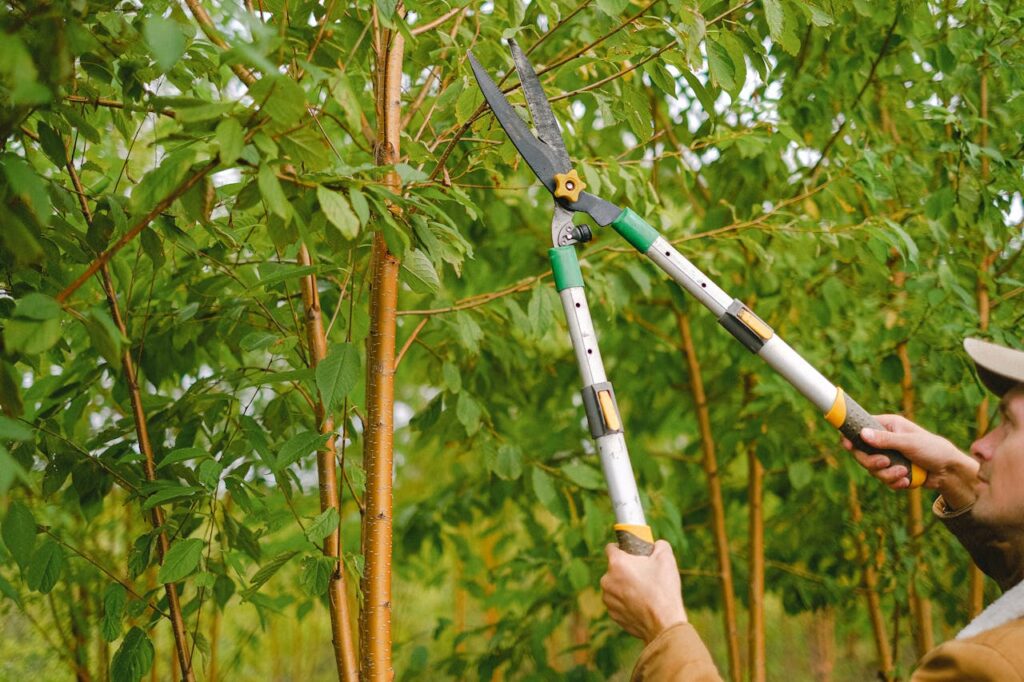Trimming your trees is an essential part of maintaining a healthy and beautiful yard. Proper tree trimming helps promote growth, prevents disease, and ensures your trees do not become a hazard. But did you know that timing is crucial when it comes to trimming your trees? Choosing the right time of year can make a big difference in the health and appearance of your trees.
Each season has its pros and cons for tree trimming. Winter is often considered the best time due to the trees being dormant. In spring, certain types of trees benefit greatly from a good trim that promotes robust growth. However, trimming in summer and fall can bring about challenges and risks that are best avoided. Understanding these seasonal nuances helps you make better decisions for your trees and your yard.
Whether you’re trying to avoid the spread of disease, improve air circulation, or shape your trees to enhance your landscape, knowing the best times to trim is key. In this article, we’ll dig into the benefits of winter trimming, what you need to know about spring trimming, and why you should be cautious when trimming in summer and fall. By the end, you’ll have a clear understanding of when to schedule your tree trimming efforts for the best results.
Understanding the Importance of Tree Trimming
Tree trimming is more than just a way to keep your yard looking neat. It’s crucial for the health and safety of your trees and property. When you trim your trees regularly, you help them grow stronger and healthier. Removing dead or diseased branches prevents decay and encourages new, healthy growth.
Beyond health benefits, trimming also improves the structure of your trees. Properly trimmed trees are less likely to develop weak branches that can break off during storms and cause damage. It also ensures that the trees grow in a balanced way, preventing them from becoming lopsided or overly heavy on one side. This can reduce the risk of the tree toppling over entirely.
Additionally, tree trimming enhances safety. Overgrown branches can interfere with power lines, block street signs, or obstruct views from driveways and sidewalks. By keeping branches trimmed, you reduce these hazards and make your property safer for everyone. So, trimming isn’t just about aesthetics; it’s about maintaining a safe and healthy environment.
Best Season for Trimming: Winter
Winter is the ideal season for tree trimming. During this time, most trees are dormant, meaning they are not actively growing. This dormancy makes it easier to see the shape of the tree and identify which branches need to be trimmed. With less foliage in the way, arborists can make more precise cuts, promoting better long-term growth.
Trimming trees in winter also minimizes the risk of disease spread. Many tree diseases are less active in colder weather, so there’s a lower chance of infections entering through fresh cuts. Insects that can transmit diseases are also less prevalent in winter, which further protects your trees.
Winter trimming can lead to a more vigorous burst of growth in the spring. When you remove dead or weak branches, the tree can focus its energy on growing new, healthy shoots. This results in a more robust and attractive tree once the warmer months arrive. So, if you want to give your trees the best care, consider scheduling your trimming during the winter months.
Spring Trimming: What You Need to Know
Spring is another good time to trim your trees, but it comes with some specific considerations. As trees come out of their dormant state, they start to grow new leaves and branches. This is an ideal time to shape your trees and remove any branches that didn’t survive the winter. By doing this, you help your trees direct their energy toward healthy growth.
One big advantage of spring trimming is the ability to see which branches are growing too quickly or in the wrong direction. Pruning these branches early helps prevent problems down the road, like branches crossing or growing too close to structures. Spring is also a good time to remove any flowers or early fruits that might divert energy from healthy growth.
However, be cautious about the timing. You want to avoid trimming right before a heavy bloom, as this can stress the tree. Waiting until after the initial growth spurt can be more beneficial. Also, keep an eye on the weather. Wet conditions can make trees more susceptible to disease, so try to trim on dry days to reduce this risk.
Avoiding Summer and Fall Trimming Mistakes
Summer and fall might seem like convenient times to trim your trees, but they are generally not recommended. Trimming during these seasons can stress trees, especially during the hot summer months when trees are under heat stress. Cutting branches can leave open wounds that struggle to heal in extreme temperatures.
In the fall, trees are preparing to go dormant. Trimming during this time can interfere with their natural cycle. It might also encourage new growth that doesn’t have time to harden off before winter, making your trees vulnerable to cold damage. Also, fungi and pests are more active in the fall, increasing the risk of infections when fresh cuts are made.
If you must trim in summer or fall, focus on removing dead or dangerous branches only. Avoid heavy trimming or shaping. This will help you minimize stress on the tree and reduce the risk of disease or pest infestation.
Conclusion
Knowing the best times of the year to trim your trees can make a significant difference in their health and the overall look of your yard. Winter and spring are the optimal seasons for trimming, helping you promote strong and healthy growth while avoiding the pitfalls of summer and fall trimming. By understanding the seasonal needs of your trees, you can keep them healthy and beautiful all year round.
Proper tree trimming is crucial for maintaining a safe and appealing landscape. Recognizing when and how to trim your trees will prevent problems and ensure they thrive. If you need expert help, consider reaching out to professionals who understand the complexities of tree care.
Contact One Two Tree to schedule your tree trimming in Atlanta today. They can provide the expert care your trees need to stay healthy and strong. Don’t wait until it’s too late—give your trees the attention they deserve with help from One Two Tree.

